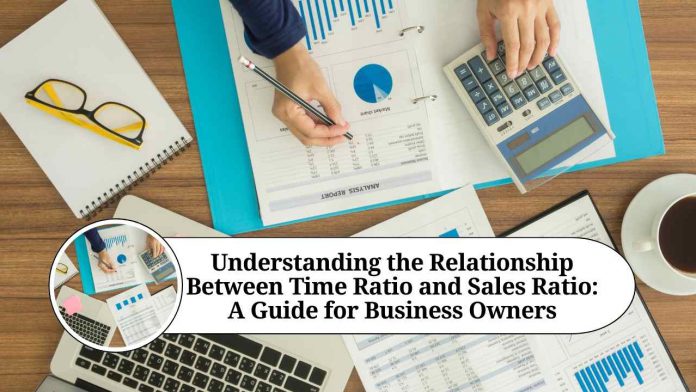As a business owner, you likely spend a significant amount of time analyzing your sales data and performance metrics to make informed decisions that can improve your bottom line. Two important metrics that you may want to consider are time ratio and sales ratio. Understanding the relationship between these two metrics can help you make better decisions about how to allocate your time and resources to maximize your sales and profitability.
What is Time Ratio?
Time ratio is a measure of how efficiently you are using your time to generate sales. It is calculated by dividing the total amount of time you spend on sales-related activities by the total amount of time you spend on all business-related activities. For example, if you spend 20 hours per week on sales-related activities and 40 hours per week on all business-related activities, your time ratio would be 50%.
A high time ratio indicates that you are using your time efficiently to generate sales, while a low time ratio suggests that you may be spending too much time on non-sales-related activities. By tracking your time ratio over time, you can identify trends and make adjustments to your schedule and priorities to maximize your sales productivity.
What is Sales Ratio?
Sales ratio is a measure of how effectively you are converting leads into sales. It is calculated by dividing the total number of sales you make by the total number of leads you generate. For example, if you generate 100 leads per month and make 20 sales, your sales ratio would be 20%.
A high sales ratio indicates that you are effectively converting leads into sales, while a low sales ratio suggests that you may need to improve your sales process or focus on generating higher-quality leads. By tracking your sales ratio over time, you can identify areas for improvement and make adjustments to your sales strategy to increase your conversion rate.
The Relationship Between Time Ratio and Sales Ratio
There is a direct relationship between time ratio and sales ratio. When you use your time more efficiently to generate sales, you are likely to see an increase in your sales ratio. Conversely, if you spend too much time on non-sales-related activities, your sales ratio is likely to suffer.
For example, if you spend a lot of time on administrative tasks or other non-sales-related activities, you may have less time to focus on lead generation and sales. This can lead to a lower sales ratio, as you may not be able to effectively follow up with leads and close sales in a timely manner.
On the other hand, if you prioritize your time to focus on sales-related activities, such as lead generation, follow-up, and closing deals, you are likely to see an increase in your sales ratio. By tracking both your time ratio and sales ratio, you can identify areas where you can make adjustments to improve both metrics simultaneously.
Conclusion
Time ratio and sales ratio are two important metrics that can help you measure the efficiency and effectiveness of your sales process. By tracking these metrics over time, you can identify areas for improvement and make informed decisions about how to allocate your time and resources to maximize your sales and profitability. Remember that there is a direct relationship between time ratio and sales ratio, so by improving one metric, you are likely to see an improvement in the other.
Frequently Asked Questions (FAQs)
Q: What is time ratio, and how is it calculated?
A: Time ratio is a measure of how efficiently you are using your time to generate sales. It is calculated by dividing the total amount of time you spend on sales-related activities by the total amount of time you spend on all business-related activities.
Q: What is sales ratio, and how is it calculated?
A: Sales ratio is a measure of how effectively you are converting leads into sales. It is calculated by dividing the total number of sales you make by the total number of leads you generate.
Q: Why are time ratio and sales ratio important for businesses?
A: Time ratio and sales ratio are important metrics for businesses because they provide insight into the efficiency and effectiveness of the sales process. By tracking these metrics over time, businesses can identify areas for improvement and make informed decisions about how to allocate their time and resources to maximize their sales and profitability.
Q: What is a good time ratio for a business?
A: A good time ratio for a business varies depending on the industry and specific circumstances. Generally, a higher time ratio indicates that a business is using its time efficiently to generate sales. However, it is important to consider other factors such as the quality of leads and the effectiveness of the sales process.
Q: What is a good sales ratio for a business?
A: A good sales ratio for a business varies depending on the industry and specific circumstances. Generally, a higher sales ratio indicates that a business is effectively converting leads into sales. However, it is important to consider other factors such as the quality of leads and the efficiency of the sales process.
Q: How can a business improve its time ratio and sales ratio?
A: A business can improve its time ratio by prioritizing sales-related activities and minimizing non-sales-related activities. A business can improve its sales ratio by improving its lead generation and follow-up processes, as well as by providing effective sales training to its team.
Q: How frequently should a business track its time ratio and sales ratio?
A: It is recommended that businesses track their time ratio and sales ratio on a regular basis, such as monthly or quarterly. This allows businesses to identify trends and make adjustments to their sales process in a timely manner.




















